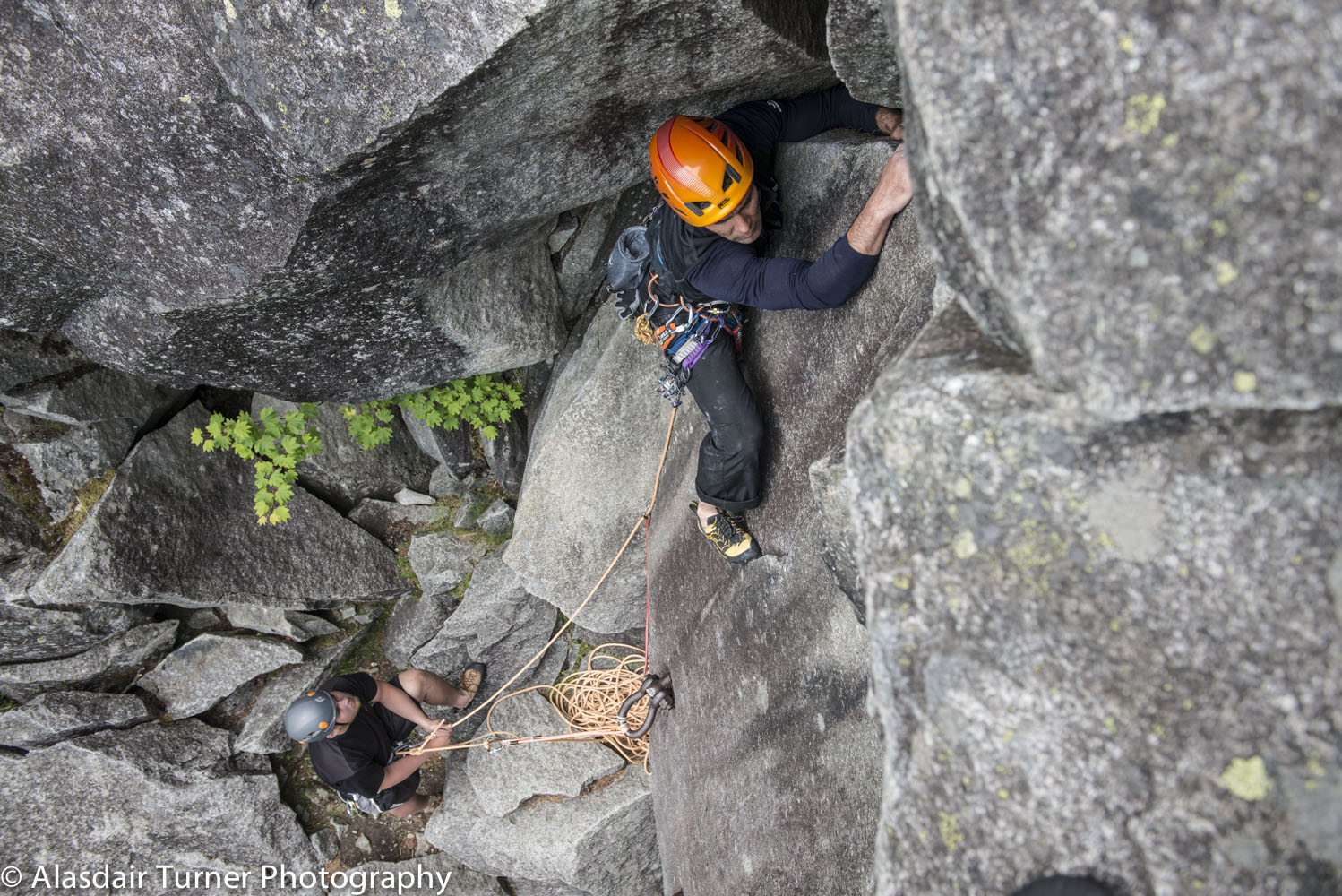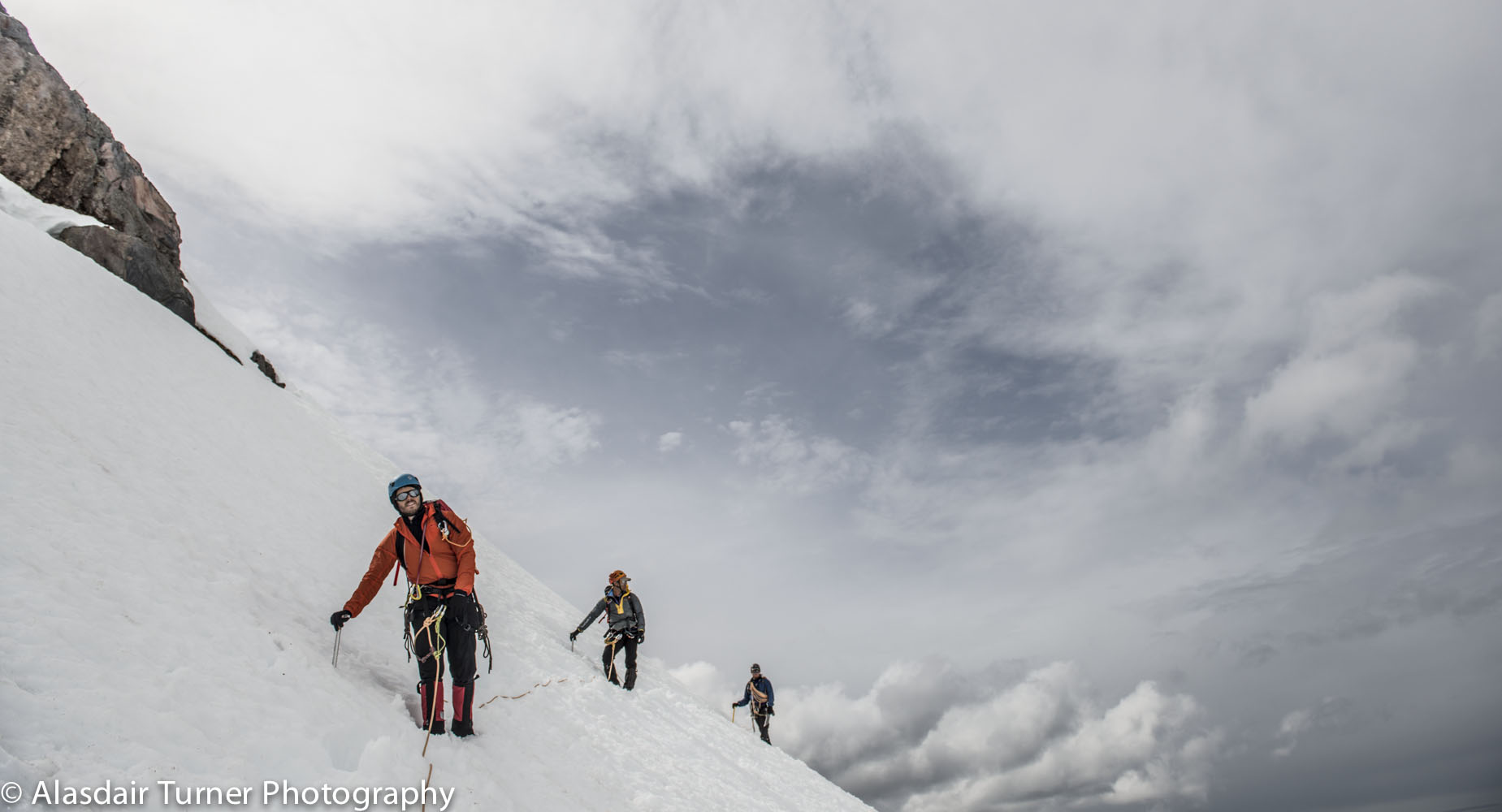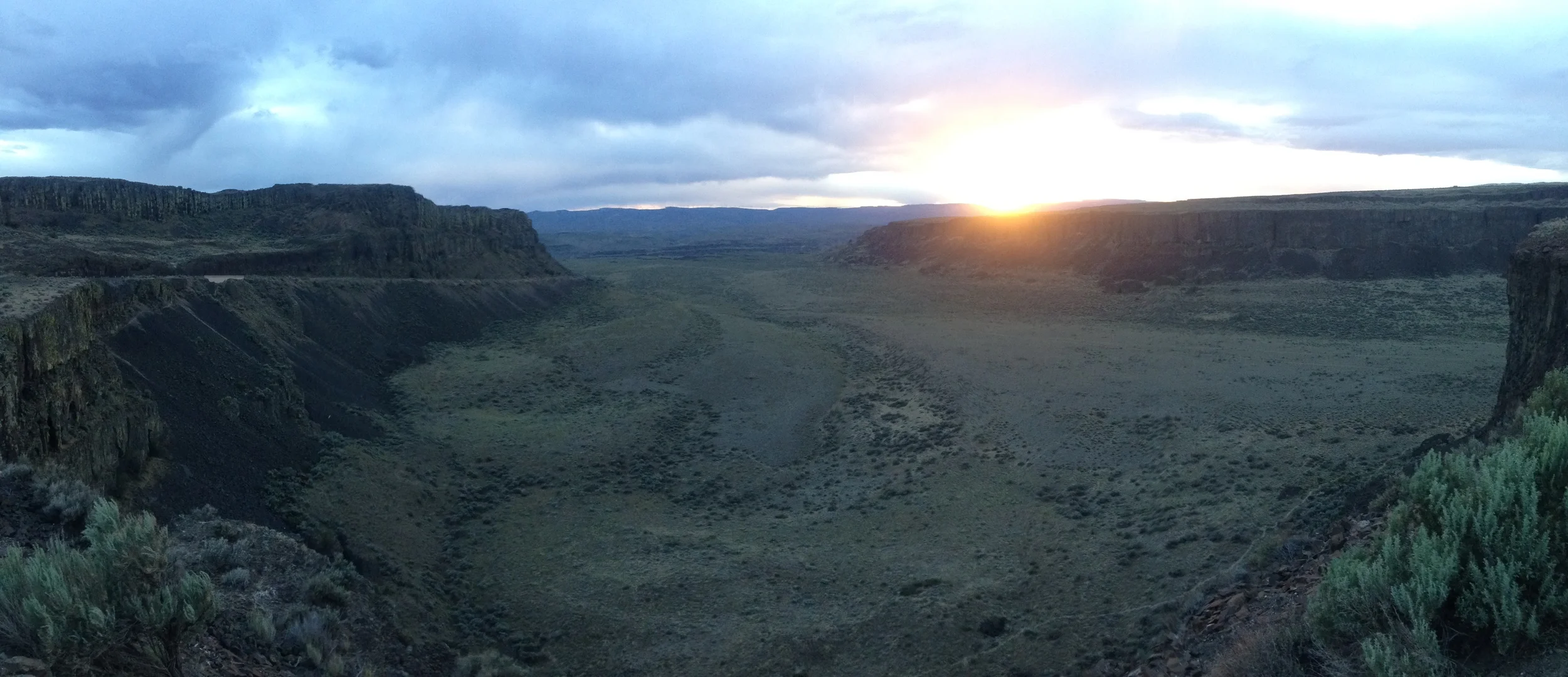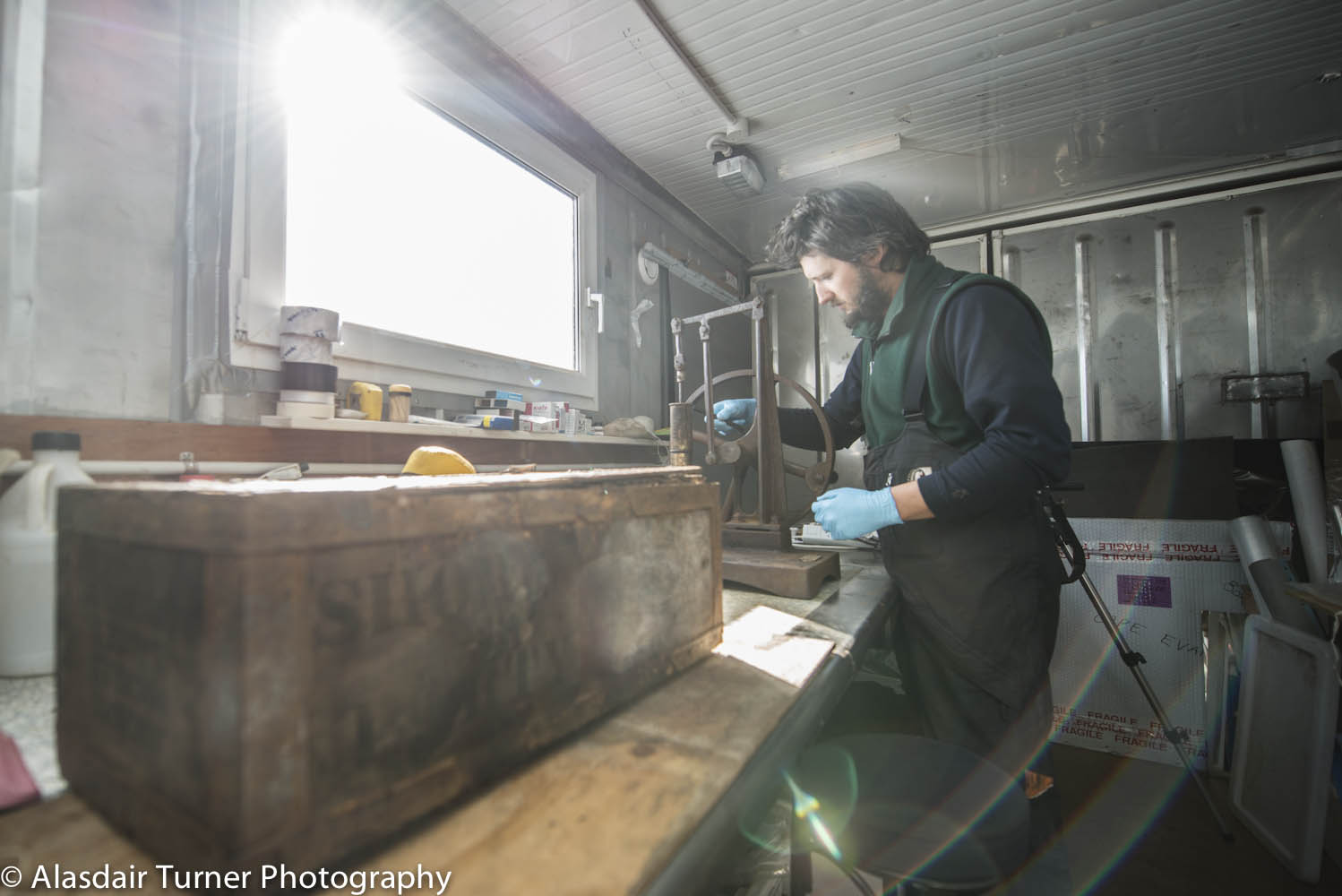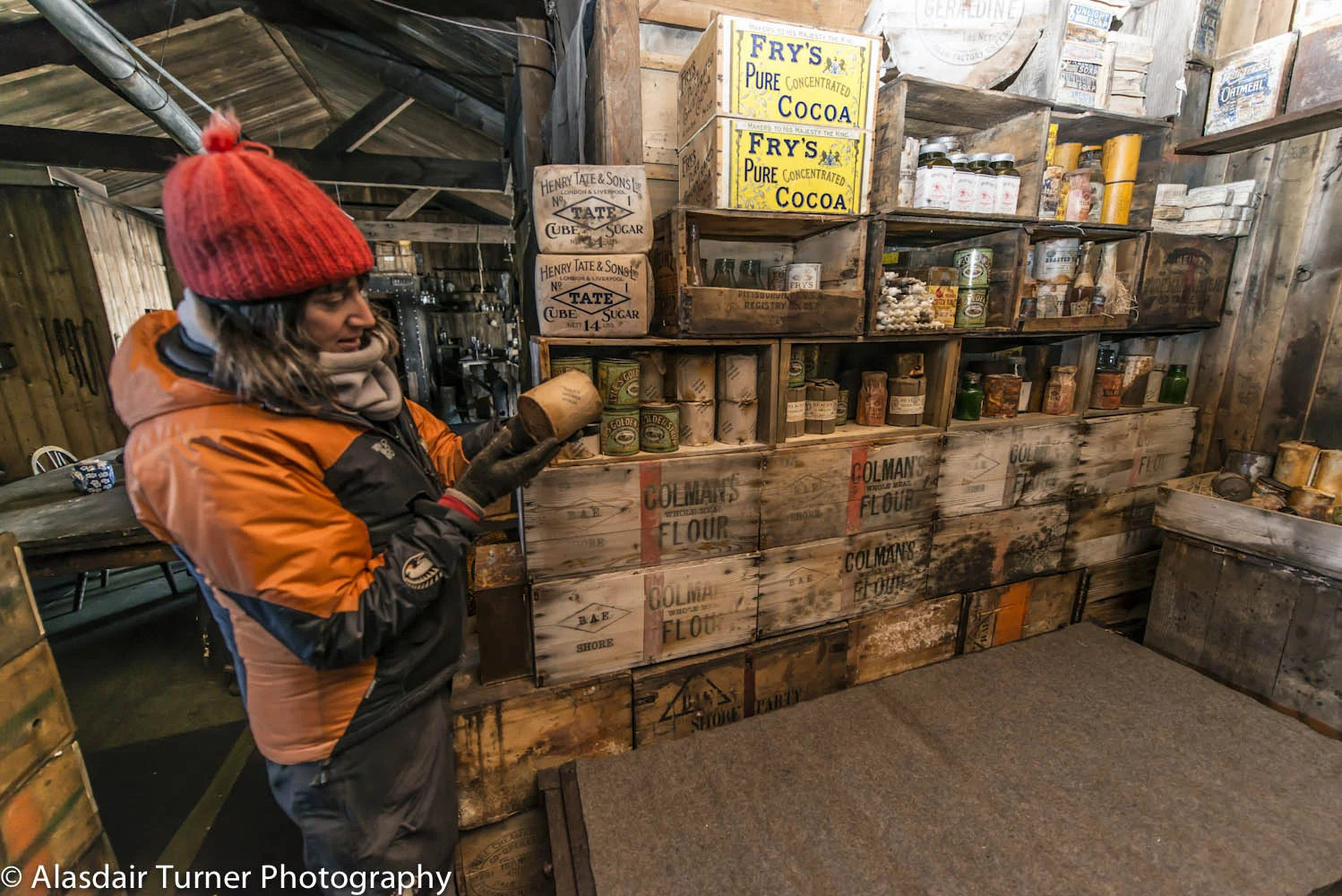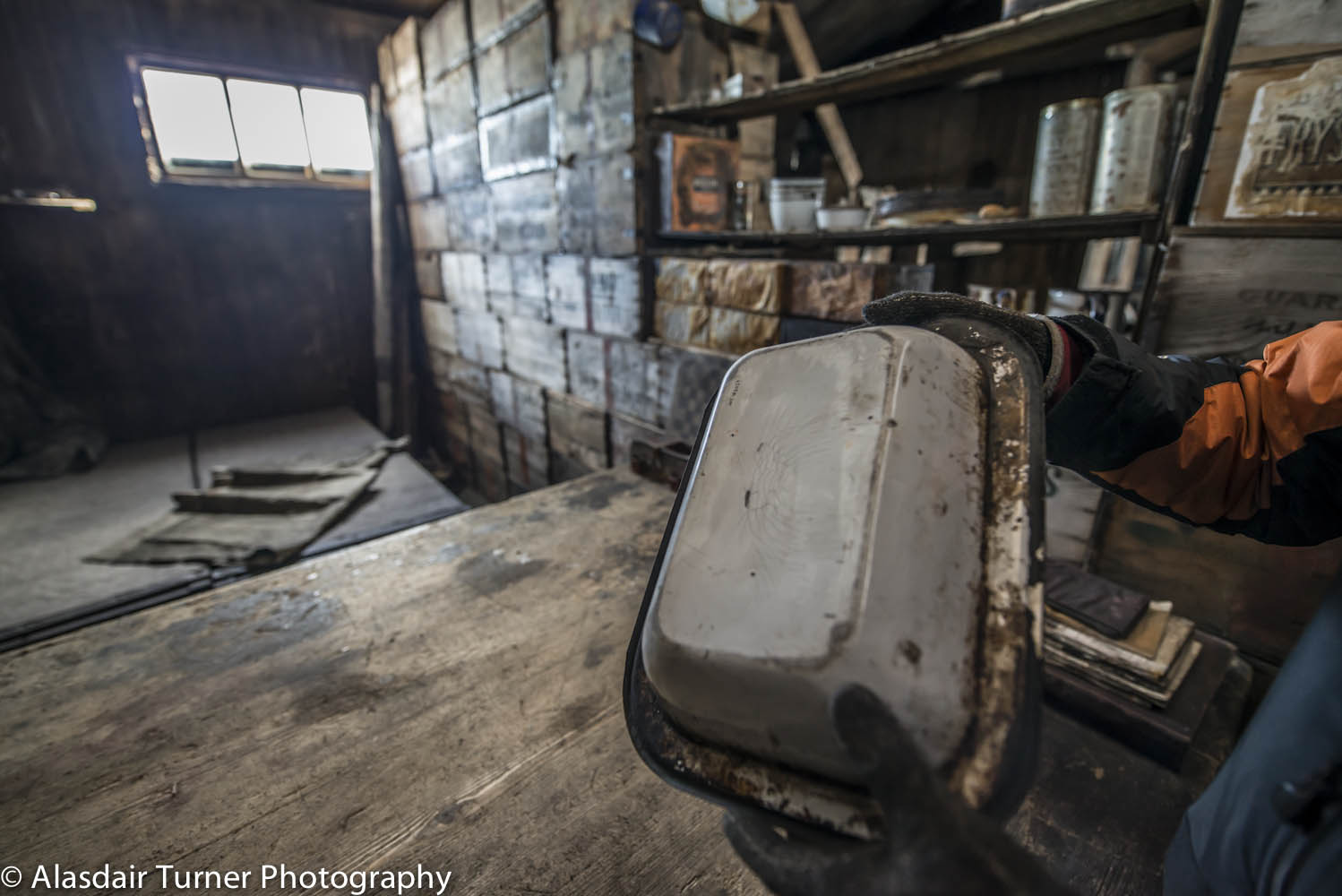It had always been a dream of mine to visit Antarctica. The reality of that dream was often realised by looking at the cost of travel to Antarctica and the knowledge that even if I could afford it, I would likely end up stuck on a boat unable to do the types of things I really wanted to do. Last year I was offered an opportunity that I could not refuse--to work as a field trainer for the US Antarctic Program. This would allow me a trip to Antarctica, and the ability to get paid for it.
It was not until I got my first glimpse of the Antarctic continent that I truly believed I would get to Antarctica. The Antarctic Program had not sent me my ticketing information to New Zealand, a required stopover, until less than 24 hours before my scheduled departure time. Thus, even once we were in the air, leaving New Zealand behind, I still believed it was entirely possible this last flight might actually take me somewhere other than Antarctica.
Flights to Antarctica are done mostly with US Air Force C-17s. New Zealand and Australia also help out by adding couple of additional passenger aircraft in early and late season when large amount of people are moving back and fourth. We flew down in a chartered Australian Airbus A-319.

 |
| Landing on the ice runway. |
We landed at McMurdo Station or, more specifically, on the sea ice about 2 miles outside of McMurdo Station. McMurdo is the main US research station in Antarctica and also the biggest. It is located on Ross Island very close to where Robert Scott built his first hut in 1902. The station is so close and now so large, outward sprawling like every other American city, that the Scott hut almost feels like a part of the station. It was originally built by the US Navy. The US Antarctic Program (part of the National Science Foundation) now runs the station since its sole purpose under the International Antarctic Treaty is scientific research. Although I do poke a little bit of fun at the expense of large government entities, I do truly respect the science that takes place in Antarctica and believe that it is invaluable to this and future generations.
 |
| Robert Scott's Discovery Hut |
 |
| The sprawling metropolis of McMurdo Station. |
McMurdo houses somewhere between 150 and 1,200 people depending on the time of year. When I arrived, there were about 300 people on station. Within several weeks that number grew close to 800 people including support staff and scientists. During the winter a core group of about 150 people keep the station running, but there is very little science underway. The support staff at McMurdo consist of everyone from janitors and mechanics, to fuel handlers and IT people. Imagine a totally isolated city with lots of heavy equipment, an airport (or two), a sewer treatment facility, a garbage sorting facility, a fire department, a cafeteria, gym, helicopter hangers, an amazing scientific laboratory, and even two bars. For each part of this small town there has to be a person to keep it running. Housing is another story. Everyone is housed in dorms, two to a room much like college.
 |
| Fuels employee refueling an LC-130. |
My job, "Field Instructor," in the Field Safety Training Program (FSTP) consists mostly of teaching survival courses to every person who is going to leave the station for field work. Much like a cold weather camping class we teach setting up tents, lighting stoves, and digging survival trenches. Survival trenches are basically a shallow grave dug in the snow in which to die in if all else is lost. They will, however, allow you to live slightly longer than if you did not know how to dig one so they remain part of the curriculum. In addition, we put the students through some scenarios, one of which we call bucket head, where the students attempt to find a missing person with buckets on their heads to simulate a whiteout. So as not to forget that this is a government-sponsored entity we also cover many of the protocols of McMurdo Station which take about as much time as the survival training. The course is a two-day course affectionately referred to as Happy Camper. Each participant gets to spend the night camping outside in Antarctica on the McMurdo Ice Shelf while we, the instructors, sleep several hundred yards away in a hut warmed with a diesel burning stove that even on the lowest settings makes us wish we were sleeping outside also.
 |
| Setting up a Scott Tent on the McMurdo Ice Shelf. |
 |
| A well-built happy campers camp with Mt. Erebus in the background. |
 |
| Bucket head |
 |
| Sun dog over Mt. Erebus as seen from happy camper on the McMurdo Ice Shelf. |
Happy campers are not the only course we teach. Trainings are a key part of the US Antarctic experience, and anyone who has to do anything must take a training in order to do it. If you are going out on the sea ice you must take sea ice training. If you are going to altitude, and most of Antarctica is at high altitude, you must take altitude training. FSTP teaches both of these. In addition we provide specialized technical trainings for science groups going to glaciated areas of the continent. Other required trainings include driving snowmobiles (basic and advanced class), Hagglunds training, Piston Bully training, chainsaw training, and light vehicle training. Light vehicle training is a two-hour class that explains how to drive a pickup truck at less than 5 mph, check the oil, and place a wheel chock any time you park it. This is all done via a Microsoft PowerPoint presentation while the trucks are parked safely outside with their wheels chocked.

In addition to trainings FSTP is also responsible for establishing travel routes on the sea ice for science teams to travel to and from dive huts and Weddell Seal breeding areas. This is amongst other things that I will get to later. Route work consists of flagging routes, and monitoring the sea ice and known crack crossings for safety. This sea ice work is conducted in the early season when it is cold. Working on the sea ice can result in some of the most fun days and also some of the worst. Overall enjoyment of sea ice work depends on weather, and, as most people probably know, Antarctic weather can be fairly bad. Antarctica may not have a lot of wildlife outside the water, but what it does have is most likely to be found while working on the sea ice. Weddell seals are often laying on the ice near the cracks that FSTP monitors, and occasionally penguins wander over during the work. Penguins are drawn to pretty much anything else that is moving on the ice so if they see you they almost always come to investigate. More on penguins and seals later...
 |
| A not so good day of sea ice work. |
 |
| Drilling holes to measure ice thickness. |
 |
| Lunch break. |
FSTP and members of our Kiwi (New Zealand) equivalent are also responsible for search and rescue. Each Thursday the team trains together. Training days consist of whatever we deem necessary to become a more effective search and rescue team. Throughout the course of a season, we step in and out of helicopters while they are hovering under full power, we set up pulley systems for an entire day, and climb around Castle Rock (one of the few recreational outings available to staff). One of the more interesting parts of search and rescue in Antarctica is the tools available to us. A lost person in an Antarctic storm would be next to impossible to find using standard search and rescue techniques. FSTP uses three Hagglands amphibious vehicles. These vehicles are meant to float if we drive them on to ice too thin, but due to a lack of spare parts neither the door seals or the pumps work in any of them, dooming them to the bottom of the Ross Sea if we were to ever drive them into the water through thin ice. Roof hatches will allow us to escape out the top as the Hagglunds slowly sinks. The Hagglunds are equipped with marine radar, Radio Direction finder, and infra-red video that allow us to drive around in zero visibility to find lost people or vehicles. All this equipment would be useless if we did not know how to use it, so we spend several days working with that also. In past years it has been used several times in real situations to find and return lost people to McMurdo safely.
In the 2012-13 season, FSTP participated in a real search and rescue involving a downed aircraft with a Canadian crew. It turned out to be a major mission involving many resources and almost all of the members from both the American and Kiwi teams. Six of us were transported approximately 800 miles by helicopter and dropped near the summit of Mt. Elizabeth in the Trans-Antarctic Mountains. At this time I will not go into any more details about this tragic accident.
 |
| Hagglunds |
 |
| SAR training on Castle Rock |
 |
| Traversing a snow slope on Castle Rock with Mt. Erebus in the background. |
 |
| The Hagglunds early in the season when the sun still sets. |
 |
| Driving a Hagglunds using radar only. |
 |
| Even with radar navigation some route marking flags become casualties. |
 |
| Testing the roof hatch of the Hagglunds. |
Mt. Erebus Work
One of the best parts of our job is field support of science projects. Science grantees can request the help of FSTP for field work. In the 2012-2013 season, FSTP supported several field projects ranging from seal tagging, to placing very precise sensors at over 10,000 ft on the polar plateau. The job of FSTP is to ensure the safety of the scientists. The field project to which I was assigned was investigating micobiological life around the volcanic vents near the summit of Mt. Erebus. Mt. Erebus is a large active volcano that makes up a huge amount of the total area of Ross Island. It is also the most southern active volcano on earth and the second highest in Antarctica. Mt. Erebus is also home to one of the only permanent lava lakes on earth. Because Mt. Erebus is an active volcano it has many vents near the summit, many of which are located underneath the glaciers and snowfields. These vents melt the glaciers from the bottom up and create large cave systems all over the mountain. There are at least 50 known caves, some of which have never been entered. Access to these caves is highly restricted due to the sensitivity of life forms that could be in them. The goal for our group was to look for microbial life in the darkest parts of these caves. More information on this work can be found
here. My job was to get them in and out of the caves safely, and, in some cases, to look for pristine, previously unentered caves from which to collect samples. This work involved finding the safest entrances, building anchors on the outside, belaying or lowering the scientists, ensuring they could climb back out, and monitoring the air for dangerously high levels of CO2.
Weather on Mt. Erebus can be exceptionally bad. Our first few days had us stuck inside a small hut while the temperatures dropped to -35F with winds up to 60 mph.
 |
| My evening accommodations on a windy day. |
 |
| ...and on an even windier day. |
 |
| Inside the Lower Erebus Hut, desperation called for the use of a human waste bucket for the Thanksgiving turkey brine. |
Many of the cave entrances are marked by large towers of ice. These are formed by steam freezing as it escapes into the incredibly cold Antarctic air. There are hundreds of these on the mountain and each is truly unique.
 |
| The large ice tower at the entrance to Sauna Cave. |
 |
| Looking strait up inside one of the ice towers. |
 |
| Ice towers near the Erebus hut. |
 |
| Exploring the ice towers. |
 |
| This tower, located above a small cave (haggis hole) with no recorded entries, was one of the sampling caves for the project. |
In the past few years both BBC and National Geographic have spent time photographing inside the Erebus caves. There is no doubt that these caves are one of the most incredible places on the planet, and I feel truly lucky to have been able to work inside of many of them.
 |
| Exiting Warren Cave, the same cave captured in both the National Geographic and BBC visits. |
 |
| Some caves are covered in crystals so fragile that even the lightest breath causes them to collapse. |
 |
| Deep inside Warren Cave. |
 |
| The one and only thing I truly have problems with is small spaces. I had to talk myself through this. |
 |
| Exiting Mammoth Cave. |
 |
| Light shines through the thin walls of Heroine Tower. |
 |
| Warren Cave. |
 |
| Crystal found in one of the caves. |
 |
| The aptly named Imax room. |
 |
| Inside Mammoth Cave, one of the largest on the mountain. |
 |
Inside Worm-tounge Cave
|
Not all of the work was inside the caves. One area of the mountain has surface temperatures so hot that any ice on it is melted off. This area also has unique biological life. We spent some time here locating and removing experiments that were left last season.
 |
| Sampling on Tramway Ridge. |
The summit crater of Mt. Erebus is huge and active with a large lake of lava in the bottom. I was able to hike around the summit on two different occasions during my trip. There is something truly amazing about visiting active volcanos. It is difficult to give a sense of place in photos since because of the incredible sounds that were present when the images were taken.
 |
| Mt. Erebus summit crater. |
 |
| The lava lake at the bottom of the crater. |
 |
| Looking into the earth. |
In the next several weeks I will add more info on what it was like to live and work at McMurdo Station.
